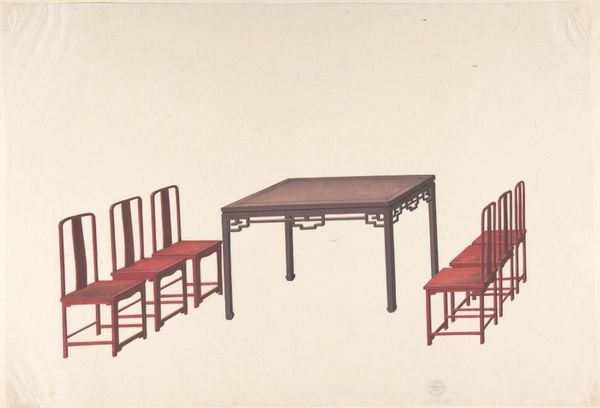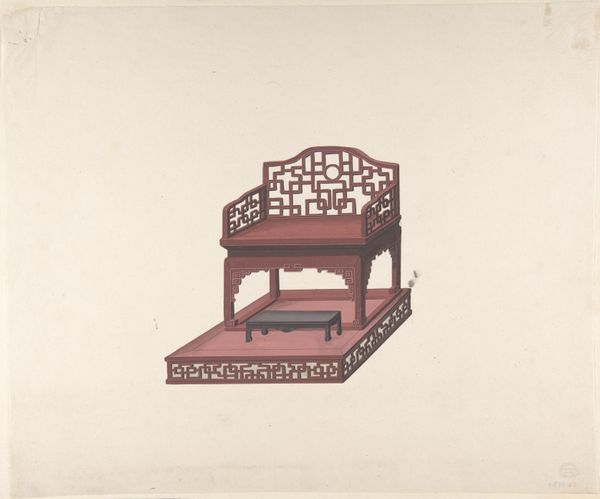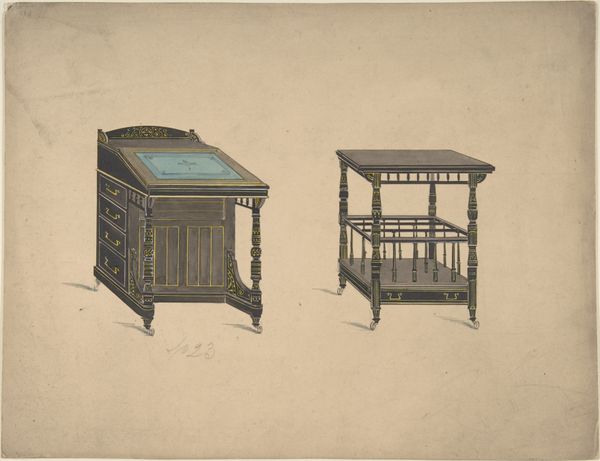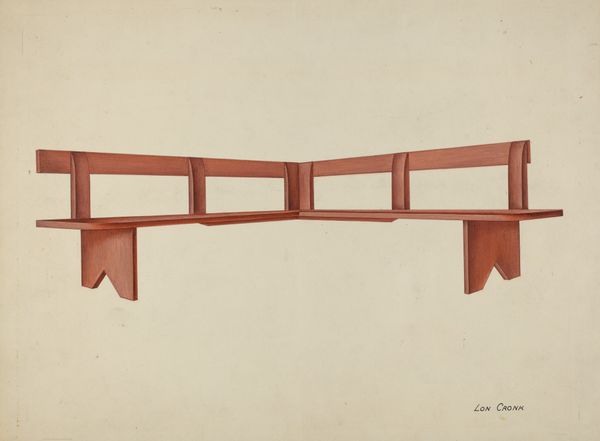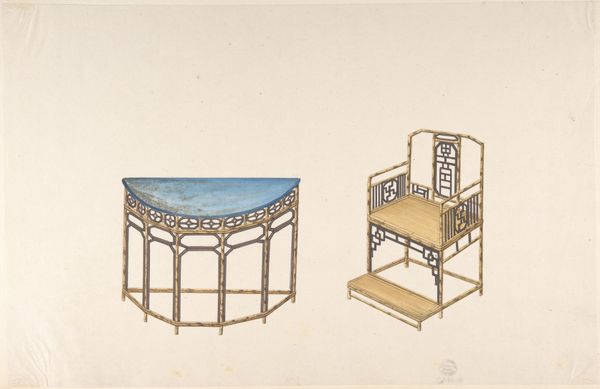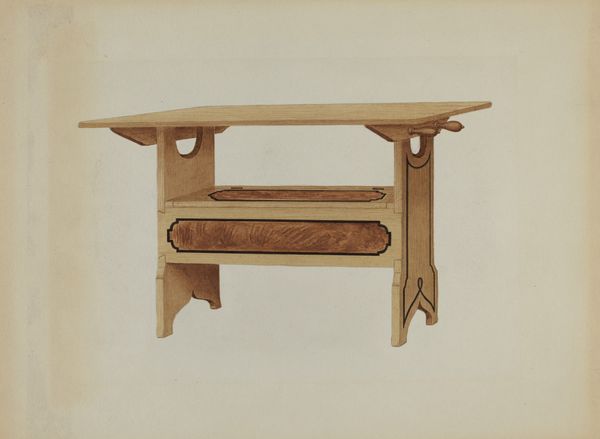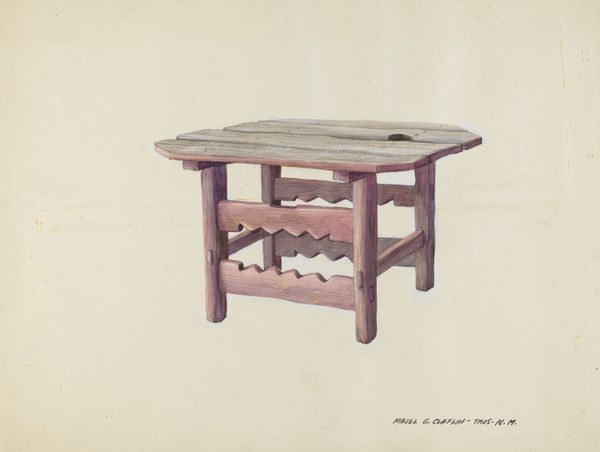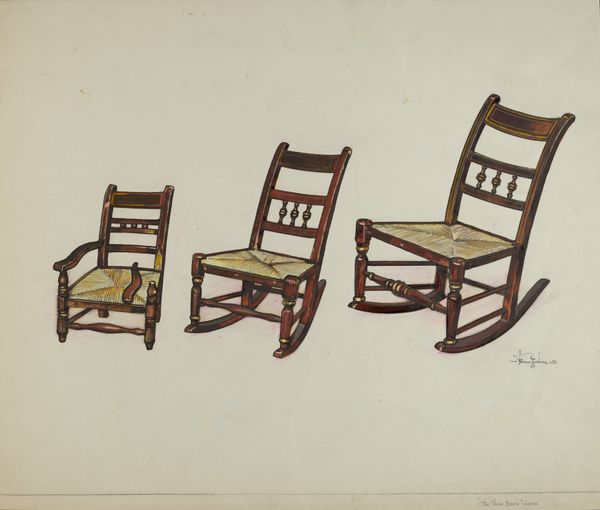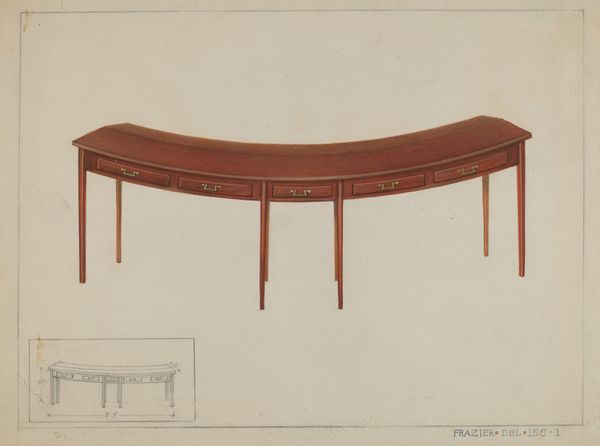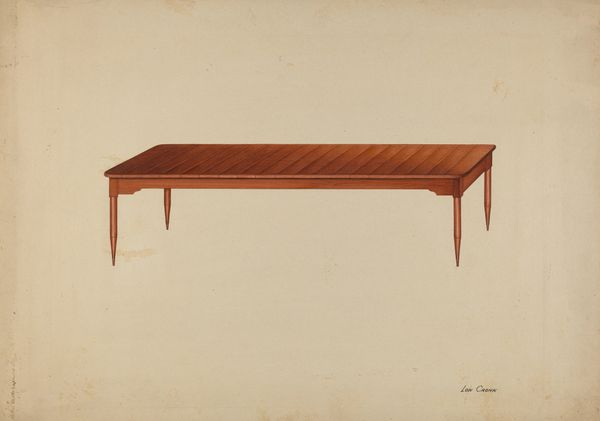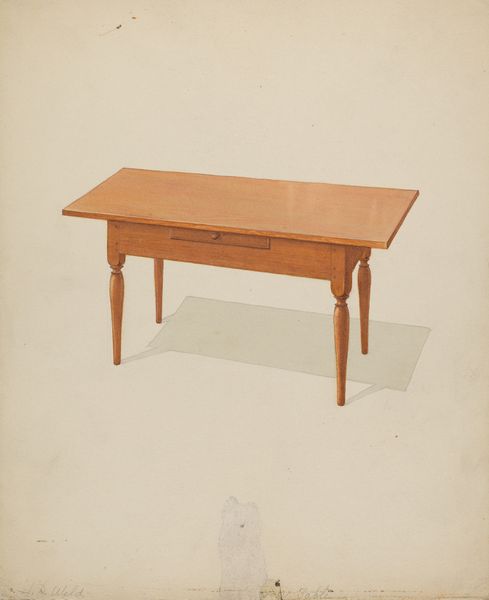
drawing, watercolor
#
drawing
#
asian-art
#
furniture
#
watercolor
#
line
#
cityscape
#
watercolour illustration
Dimensions: sheet approx.: 11 x 16 in. (27.9 x 40.6 cm)
Copyright: Public Domain
Curator: Here we have an anonymous work entitled "Design for Export Furniture," created sometime between 1795 and 1805, utilizing drawing and watercolor techniques. It resides here at the Metropolitan Museum of Art. Editor: The first thing that strikes me is how simple, and yet elegant it appears, as if suspended on the paper. A kind of formal restraint that really emphasizes function. Curator: That makes sense. It's important to consider the economic context. These designs were meant for export, speaking to a rising global market. Someone, perhaps a craftsman in Canton, meticulously rendered this proposal for furniture that would find its way to European or American homes. Editor: It speaks to larger power dynamics, too, doesn't it? The consumer demands in one part of the world dictating the labour and, therefore the lives and local economies, of others. Who gets to define 'good' design, and on whose back is that vision built? Curator: Exactly. The watercolour medium also says something about the purpose. Think of it as almost an industrial blueprint: lightweight, relatively easy and inexpensive to reproduce, and clearly demonstrating construction details, a tool for communication across linguistic and cultural boundaries. Editor: And the limited colour palette—mostly earthy tones. Was that driven by material availability or aesthetic choice? It hints at broader trends too; is the clean lines also connected to changing consumer tastes or cultural appropriations? Curator: The browns and tans likely reflect readily available pigments, practicality being paramount in this design phase, with an emphasis on presenting realistic samples. As for the forms of the pieces, they likely speak to specific requests of Western consumers wanting novel or exotic pieces but rendered to complement their homes. Editor: So much history encoded within what seems, initially, to be a straightforward drawing. It provokes some serious questions about trade, cultural exchange, and the visual languages that both unite and divide us. Curator: Agreed. Looking deeper shows how designs became implicated in processes of global trade during this historical moment, representing intersections of taste, commerce and intercultural encounters. Editor: Absolutely, it’s a compelling reminder to question whose stories are embedded in everyday objects.
Comments
No comments
Be the first to comment and join the conversation on the ultimate creative platform.
